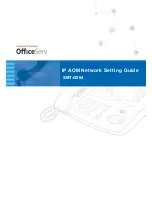
TD 93021US
17 July 2017 / Ver. PF3
1
Installation Guide
teleCARE IP
1
Introduction
The installation guide covers the mechanical and electrical installation of the teleCARE IP Emergency Call
System. The teleCARE IP “System Description” (TD 92608GB) should be read before reading this manual
to gain a general understanding of the teleCARE IP system.
Throughout this document there are “cross-references” in the text which indicate that further details can
be found in another section of this document. The cross-references are colored blue and linked to the
relevant place in the document. Positioning the cursor over the “cross-reference” then click the left
mouse button to go to the relevant section of the document. The product illustrations in this document
represent the products when the illustrations were created. The actual appearance of the products may
vary due to subsequent technical modifications and component changes.
Many devices in this manual are static sensitive. When you see this icon in the manual,
observe all proper handling procedures for static sensitive devices.
1.1
General
teleCARE IP is a Local Area Network (LAN) based Emergency Call System for assisted living and
independent living facilities. The LAN/WLAN infrastructure is used to communicate the information
generated in the emergency call system, such as calls for help or assistance, staff presence, emergency
alarms, technical alarms, etc. The IP integration is at room level with at least one IP port per room.
teleCARE IP operates on a Ethernet LAN based on 10/100 BaseT, using a Cat 5 (or higher) structured
wiring for 100 BaseT. The network shall be a dedicated network.
The teleCARE IP system is modular, scalable and built around the Room Controller (NIRC3). Power is
supplied using an external 24Vdc power supply.
teleCARE IP peripherals are connected to the room controller by a digital room bus. Each room controller
includes four room buses with eight addresses per bus.
In a teleCARE IP Emergency Call System the maximum number of individual call locations must not
exceed 200.
The modularity of teleCARE IP makes it easy to extend and add new functions to already installed
systems. The LAN technology allows easy installation of new room controllers and peripherals in order to
extend the existing teleCARE IP system.
1.2
Installation and Commissioning
The installation and commissioning of teleCARE IP should only be undertaken by qualified technicians
and carried out in accordance with all regulations. Only original teleCARE IP parts and components are to
be used in any teleCARE IP installation. In order for the system to function properly these parts must be
installed in accordance with the appropriate teleCARE IP installation instructions.
The teleCARE IP equipment should only be installed when the building work is completed and when the
environment is clean, dry and totally weatherproof. All control and distribution equipment must be
accessible for commissioning and servicing.
The acceptable environmental conditions for the teleCARE IP system, associated power supplies and
related equipment are all listed systems and components and are in compliance with the safety
requirements of ANSI/UL 2560 Standard for Safety, Emergency Call Systems for Assisted Living and
Independent Living Facilities and CAN/CSA No. 205-12, Signal Equipment.
WARNING:
The teleCARE IP equipment should not be installed in areas where the air pressure is
below 850 millibar (approximate maximum altitude of 6100ft (2000m)).







































